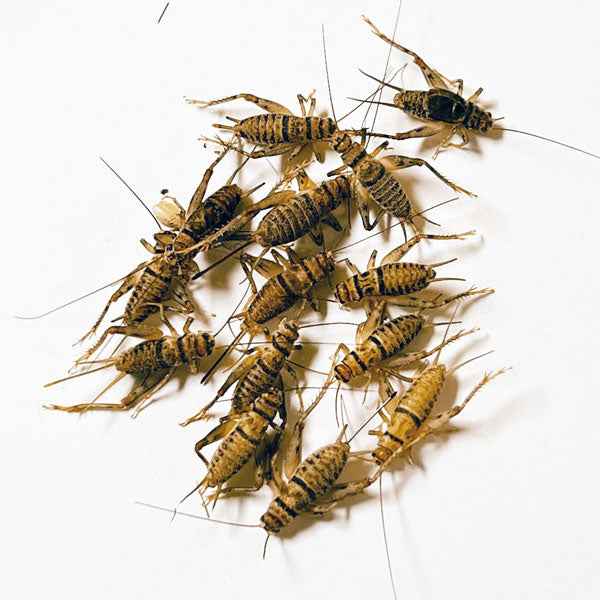NutriCricket
Live Crickets (Banded)
Live Crickets (Banded)
Product Information
Product Information
Our Premium Disease Free, Pest Free, Live Crickets.
- Many cricket farmers have tried to produce a cricket that is as healthy and hearty as ours, but few have succeeded. We cut no corners when it comes to raising our crickets. If you've ordered from other sources in the past, you're sure to appreciate the pristine quality and professional packaging that we've worked so hard to provide to you.
- Buy in bulk for an even better value.
- Some amount of variation in size is normal and expected, as these are a natural product.
- Remember when feeding insects with a hard outer shell (crickets, roaches, etc.), they should never be larger than the space between your pet's eyes.
How Long Can I Keep My Crickets Alive?
- The life span of a cricket is 8 to 10 weeks. Our small crickets are around 3-4 weeks old, mediums are 5-6 weeks, and larges are 7-9 weeks old.
- Your goal should be to order at least a month's supply at a time, so it's best to order more smaller crickets and allow them to grow.
Directions For Use
Directions For Use
Where Should I Store My Crickets?
Crickets should be kept in a large plastic tub. We recommend using one with a lid to prevent the crickets from escaping, but you must make sure there is plenty of ventilation. If you are creating the housing yourself, this means cutting holes in the side of the tub or the lid and affixing a metal screen.
Crickets prefer dark, tight spaces to hide and will become stressed and/or sick without them. Vertically stacked egg crate flats provide the perfect shelter for them, as they are non-toxic and textured, making them easy to climb.
Bedding material in the bottom of the tub is not necessary.
Important note: Be sure to open your box of crickets inside the tub to prevent them from escaping into your house!
What Do I Feed My Crickets?
Crickets thrive on a grain-based diet. If you do not have the means or the desire to make your own, we sell cricket food that has been tested vigorously and optimized to meet all their nutritional needs.
If you choose to supplement their diet, you can do so with a variety of fruits or vegetables (e.g. apples, potatoes, carrots). However, fresh food will eventually rot, so you have to be diligent about replacing them regularly and watch closely for signs of mold.
What About A Water Source?
For hydration, you can purchase our insect water, which has been formulated to create a gel-like consistency, and contains no additives. Crickets are notorious for drowning in even the smallest pools of water, so using a water dish is not a safe option.
Alternatively, you could fill the dish with damp paper towels or a sponge (using filtered water), but these would have to be replaced at least every two days to prevent bacterial build up and smell.
Why Should I Dust My Crickets With Calcium VS Feeding It To Them Directly?
Crickets have an exoskeleton, meaning their skeleton is outside of their bodies. Too much calcium makes their skeleton brittle, and they are not able to molt it off as they grow into their next stage of development, which causes premature death. Waiting until just prior to your reptile's feeding to dust the crickets with calcium will prevent this from happening.
We recommend dusting your crickets every other feeding.
How Do I Remove The Crickets To Feed Them To My Reptile?
A good trick is to leave an empty toilet paper roll in with your crickets. Because they enjoy hiding in dark, tight places, so they will happily make their way inside the roll. When you're ready to feed your reptile, simply remove the roll and place it in the enclosure with your animal!
What Else Do I Need To Consider?
- Crickets should be kept at room temperature or 70 degrees, at minimum.
- Crickets are very sensitive to chemicals.
- Be sure to clean your cricket container every week!
Couldn't load pickup availability
Share

